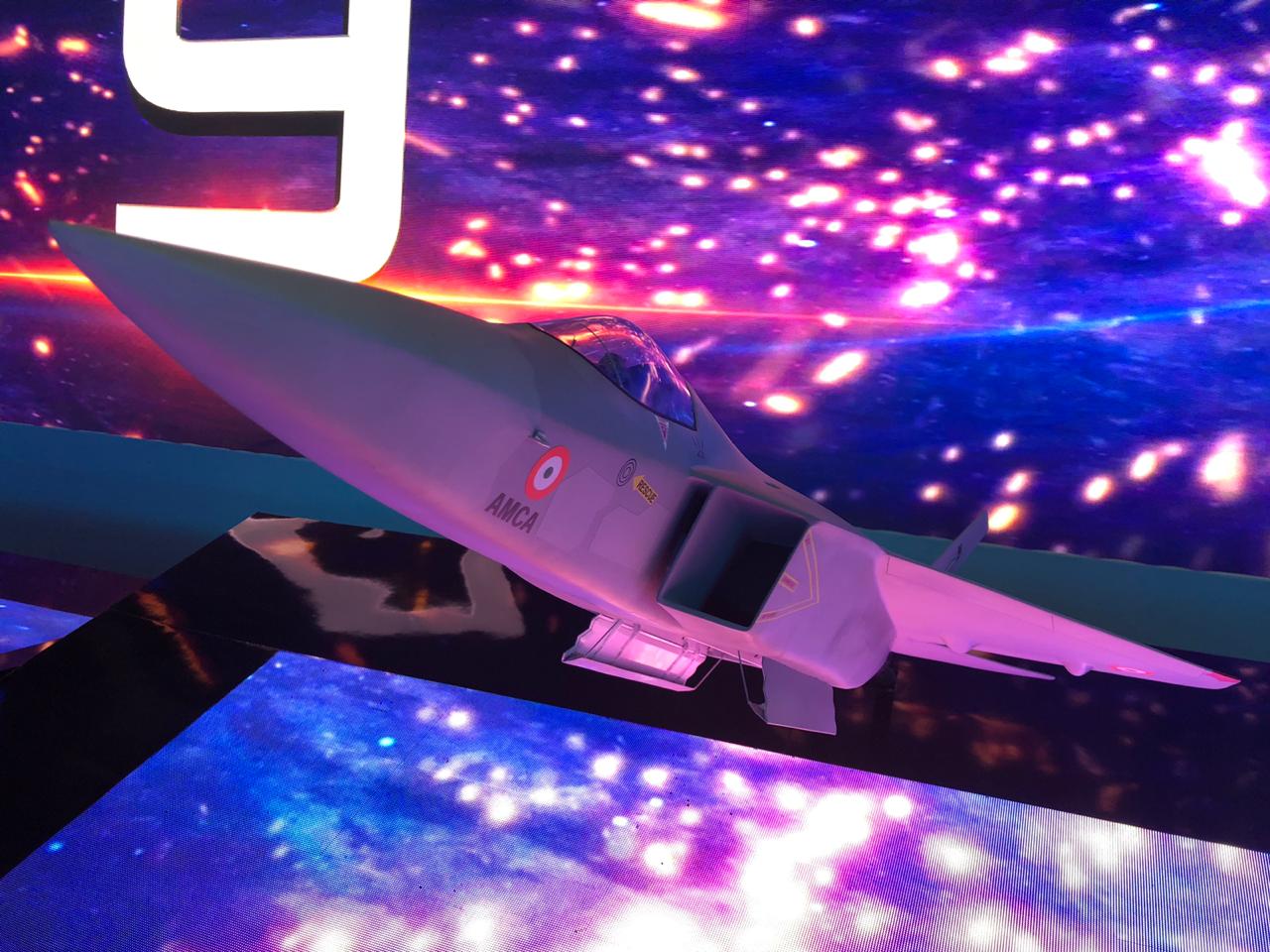Bid To Choose Pvt Partner In India’s 5th Gen Fighter JV Begins

Never before has an Indian private sector company been offered the opportunity to be an equal partner in a military aviation project. Military aircraft development and manufacture has so far strictly been the preserve of the state-owned DRDO and Hindustan Aeronautics Ltd (HAL). Now, in one of the biggest shifts in India’s government-monopolised military industrial complex, that’s about to change.
Seen as the most meaningful and substantial involvement of the Indian private sector in a military aviation project, all eyes are now on which privately-held company will be chosen to be an equal joint venture partner for India’s fifth generation fighter effort, the AMCA project. In a major newsbreak Sunday night, Livefist revealed that the Advanced Medium Combat Aircraft (AMCA) program, is to be executed by a public-private joint venture — a first in Indian military industrial history.
Livefist can now confirm that the selection process is all set to begin to choose the private sector partner in the proposed corporate joint venture. A special purpose vehicle (SPV) is to be created in the interim, followed by a full-fledged joint venture that will administer and execute the development, manufacture and testing of the fifth generation AMCA.
Livefist has learnt that companies that include Larsen & Toubro, Lakshmi Machine Works (LMW) Advanced Technology Centre, Tata Advanced Systems Ltd (TASL) and at least three other private sector defence firms are in the fray. While Livefist understands that L&T is being seen as a frontrunner, given its existing deep involvement and experience in India’s strategic military programs, including the nuclear submarine build program, a final decision on the AMCA JV will only be taken once the selection process is complete.
Workshare, financials and other terms of reference are to be drawn up this year ahead of decision on the private sector company that will be — for the first time — an equal player in India’s most crucial aviation project. The AMCA JV thrust is separate from the existing supplier and developer base the project already has in the private sector. Companies like VEM Technologies, Dynamatics and others are already involved in the prototyping stage, and will remain tier-level partners for the duration of the project.
The AMCA joint venture company will be based in Coimbatore, where an AMCA ‘site’ has been ready for nearly two years now at the IAF’s Sulur base in Tamil Nadu. According top priority to the program, the IAF has already earmarked 20 acres of land for the JV in Sulur for the final assembly and checkout facility. Testing of the jet will take place at the peninsular base which also houses the IAF’s LCA Tejas squadrons.
While the original plan was for the AMCA JV to be directly between the Aeronautical Development Agency (ADA) and a chosen private sector company, HAL’s involvement in the design of the jet has meant that the state-owned company will be part of AMCA corporate entity. The fact that the AMCA JV is to come up in Sulur in Tamil Nadu, and not HAL’s home turf of Bengaluru, is indicative of this original impulse. Once things get moving, the AMCA will be, by far, Tamil Nadu’s most significant military industrial project.
Given how crucial the AMCA project is to future military planning, one of the biggest questions is just who will call the shots in the proposed joint venture. With HAL and the Aeronautical Development Agency (ADA) both involved in the preliminary design studies on the stealth jet, the Indian Air Force has expressed concern over the pace of work. Top IAF sources tell Livefist that the air force is hoping that the private sector company chosen for the JV should call equal shots in the new arrangement, if not taking a full lead.
Then there’s the question of the proposed jet’s engine.
The twin-engine AMCA is planned to be powered by an in-development 110 KN turbofan being developed by HAL, DRDO’s Gas Turbine Research Establishment (GTRE — the lead agency) and a foreign engine major (France’s Safran). HAL chairman R. Madhavan told Livefist in an interview last week that the new engine would be ab initio but draw learnings from the erstwhile Kaveri turbofan project. Prototypes of the AMCA, though, will be powered by GE F414 engines. The HAL chairman has said work has speeded up to roll out an AMCA prototype by 2025, with flight test to begin in 2027-28, which confirms earlier timelines set by the DRDO.
In April 2019, Livefist spoke to the director of the AMCA program, Dr A.K. Ghosh.
EXCLUSIVE: Livefist interviews Dr AK Ghosh, director of India’s AMCA fifth generation fighter program. #AeroIndia2019
LiveFist ????? ?? ????? ???? ???????, ?? ??????????, ????
from Livefist https://ift.tt/3dK2cWm
via Live Defense
Comments
Post a Comment